The Imperial Downfall of the Bass Museum
A Simulacrum of Feudal Order in a City of Delusion

The alleged princess and philanthropist Dolores Ziff
Hollywood made it to SoBe. A polychromatic elephant parade moved down Collins Avenue, the production of a princess, the Bass Museum and the City of Miami Beach. There were “Gifts of the Silk,” fifty foot dragons, and Thai dancers. A newly arrived princess from la Conchinchine married a powerful real estate lawyer http://www.miami-dadeclerk.com/mlsweb/LicenseSearch.aspx was blessed by influential philanthropists Sanford and Dolores Ziff, and, alas, received the key to the city. Thi-Nga Goldman, imperial princess of kitsch, combined Thai and Vietnamese rituals at will in elaborate social affairs with largesse of photo-ops. An impeccable website full of promises (nonexistent companies) and a complex genealogy assured the absence of Google activity or independent research. There was talk she attended a synagogue http://www.miaminewtimes.com/2007-02-22/news/the-princess-of-miami A rabbi married her to Mr. Goldman. A fervent anti-Communist, the new Miami royal understood the plight of Cuban-Americans. The princess greeted fans riding alongside the mayor in a Jaguar convertible. Flags flew all over Miami Beach and connecting bridges: “The Jade Collection of HIH Princess Thi-Nga of Vietnam.” The Bass Museum of Art had just elected Mrs. Thi-Nga Goldman (allegedly HIH Princess Thi-Nga of Vietnam) to chair its Board of Directors. Upon taking office, the institution opened a one-owner exhibit of Mrs. Goldman’s jade collection. It was curated by Ms. Diane Camber, the museum director, without express board approval, without addressing the possibilities of appearances of impropriety or consulting existing museum policies, without provenance documentation, and without curatorial expertise in Oriental art.
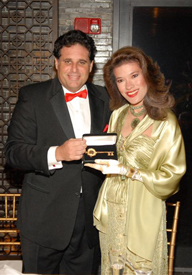
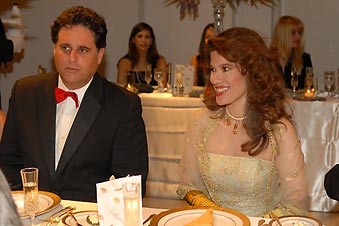
The alleged princess and the mayor, at left receiving the Key to the City
Countless calls to Ms. Lee Ortega, the museum’s press officer, about this matter went unanswered. The Bass exhibit and the provenance of the objects were to be the subject of an article in a bilingual arts magazine. The lack of response from Ms. Ortega or Ms. Camber made it necessary to contact the State Attorney’s Office to intervene on a Sunshine Law request for documentation. The information arrived on a piecemeal basis and after countless dilatory practices. It finally became possible to examine the exhibition budget, the VIP party’s expense report, Mrs. Thi-Nga Goldman’s contribution (from her personal American Express, not her alleged foundation or company as the museum falsely declared in its press releases), and, most importantly, to read the minutes of the Board of Directors. The prevalent attitude at the Bass was that the museum— almost like a private club — owed no explanation or information to taxpayers.
I. Conflict of interest
The American Association of Museums looks askance at an institution doing a one-owner exhibit of the collection of an employee or member of the board of directors. Since they have undue influence in programming decisions and stand to gain from exhibition of their holdings, it is a blatant conflict of interest. The Bass violated §§IB and IC of the AAM Code for Borrowing Objects.
“I. Borrowing Objects
The policy will contain provisions: A. Ensuring that the museum determines that there is a clear connection between the exhibition of the object(s) and the museum’s mission, and that the inclusion of the object(s) is consistent with the intellectual integrity of the exhibition. B. Requiring the museum to examine the lender’s relationship to the institution to determine if there are potential conflicts of interest, or an appearance of a conflict, such as in cases where the lender has a formal or informal connection to museum decision making (for example, as a board member, staff member or donor). C. Including guidelines and procedures to address such conflicts or the appearance of conflicts or influence. Such guidelines and procedures may require withdrawal from the decision-making process of those with a real or perceived conflict, extra vigilance by decision-makers, disclosure of the conflict or declining the loan.” AAM GUIDELINES ON EXHIBITING BORROWED OBJECTS
http://www.aam-us.org/museumresources/ethics/borrowb.cfm
It is a well established fact that in today’s world, museums depend on collectors to borrow pieces in order to complement exhibits. Serious museums, however, avoid one-owner shows when the collection is unknown or can be supplemented by local or nearby holdings. Neighboring Lowe and Norton museums have distinguished Oriental art collections and have experts that could have made this a solid educational enterprise for the benefit of South Florida.
II. An exhibited not vetted
The jade show was never looked at by a true Asian art expert; the provenance of the pieces remain a mystery to this day. Ms. Camber proceeded without board approval to curate the exhibit on her own. Ms. Camber has no credentials as an Asian art expert. A sign, subsequently removed, informed the visitor, that an ancestor of Thi Nga (Mrs. Steven E. Goldman) had met with guillotined Louis XVI in 1812. This is shoddy curatorship. Ms. Camber does not have a Ph.D. but the fact that Louis XVI was executed in 1793 is high school information. Not only is there a conflict of interest situation at hand but also reckless actions on the part of the museum’s director. What if the collection has no aesthetic or historical merit? What about if the provenance is questionable? South Florida taxpayers have a right to know.
III. Misrepresentations to the press and public
The museum, in its website, states: “The Private Jade Collection of Her Imperial Highness Princess Thi-Nga of Vietnam will be on view at the Bass Museum of Art through April 29, 2007, and will travel nationally and internationally.” http://bassmuseum.org/about/JadeCollection.htm
No curator or expert at Harvard’s Sackler Museum, the Asia Society, the Asian Art Museum in San Francisco, among others, was aware of the collection, its importance, or the existence of the princess. The collection, naturally, is not traveling anywhere outside the Goldmans’ living room.
IV. A questionable owner
At that juncture the imperial identity of Cong Tang Ton Nu Thi-Nga or Thi-Nga-Cong-Tang-Ton Goldman’s (Mrs. Steven E. Goldman) became an issue. There were banners all over the city that read: “The Jade Collection of HIH Princess Thi-Nga of Vietnam.” In a VIP event at the Bass, the alleged princess received the key to the city of Miami Beach. Some experts reacted in the following manner:
“Hello, this genealogical tree is false [in Thi-Nga’s website http://www.imperialholdingsinternational.com/ specifically at http://imperialholdingsinternational.com/Genealogy.htm
“The last King of Vietnam (Bao Dai, Prince Vinh Thuy) was born in 1913. He was of the fifth generation of King Minh Mang. According to this image, Thi-Nga is of the fourth generation of King Minh Mang! She should then be more than 130 years old! In any case, she is not in the direct line of the king, she is not princess; she is nothing at all.”
Mr. Tan Loc NGUYEN, France, Vietnamese history and art website operator used by UCLA “Internet Links for Vietnam”
According to Professor My-Van Tran, Ph.D.:“Re your question. I do not know or hear anything about this ‘princess’. Nor I have any dealing with her. By the way she should be Ton Nu Thi Nga. However, please bear in mind that as the Nguyen monarchs had many, many wives and concubines there have been many, many, many grand children and great grand children. If they all claim royal title as ‘prince or princess’, we should have many thousands of them all over the world, including Vietnam!!!!!
Regards,
My-Van,
Dr. My-Van Tran, Associate Prof. and Coordinator, International and Asian Studies
According to the Royalty system and title. Thi Nga’s father is not an Emperor. He … connects with the royal family. In this regards one should not use the title HIH Prince or princess. Possibly Lady
http://www.4dw.net/royalark/Vietnam/annam7.htm
Dr. My-Van Tran
Thi Nga offers her own genealogy at
http://imperialholdingsinternational.com/Genealogy.htm
Her alleged grandfather, in any official Vietnam royal history consulted, died at age 15 in 1855 and her father is never referred to as “Prince Ung-Thi” (though known as a wealthy man, owner of the Rex Hotel). Her great great grandfather is a Duke and is referred to as HH the Prince. He was the son of an Emperor (Minh Mang) who fathered over one hundred children with over one hundred wives and concubines. Ms. Camber, as Director and Curator was charged with the responsibility to do the research and find out that there is only one His Imperial Highness Crown Prince of Vietnam: the grandson of the last Emperor of Vietnam. It is a simple matter. The family lives in France. “Bao Long is the head of the Imperial Family. In http://en.wikipedia.org/wiki/1997 when the Emperor Bao Long inherited the position of head of the Nguyen_Dynasty http://en.wikipedia.org/wiki/Nguyen_Dynasty . He has remained out of politics and lives quietly in Paris and he has not married and currently does not have any children. Bao Long has been working with Prince Bao_Vang http://en.wikipedia.org/wiki/Bao_Vang who serves under him as the Grandmaster of the http://en.wikipedia.org/wiki/Order_of_the_Dragon_of_Annam Order of the Dragon of Annam. The position is non-political in Vietnamese politics and the role of the royal family under the leadership of Crown Prince Bao Long is for humanitarian, educational, and cultural endeavors of the people of Vietnam http://www.emering.com/orderOfDragon/purpose.html http://en.wikipedia.org/wiki/Bao_Long,_Crown_Prince_of_Vietnam
The trouble with claiming special status from this [descent from Minh Mang], even if true … is that Minh Mang had a huge harem and produced over a hundred children, meaning his great-great-grandchildren and so on today would constitute a small army. Because of this very tradition, titles were not inherited in Vietnam beyond the second generation. …and has had no contact or endorsement by the Emperor’s heir Crown Prince Bao Long, who lives modestly in France.” This is in a site on Modern Royal Pretenders assessing the validity of a Vietnamese royal pretender who wishes to trace his lineage (just like Thi-Nga Goldman) to Minh Mang.
http://www.geocities.com/josephiicrisp/royalfakes.html
Royal historian Henry Soszynski, based in Austria, writes to me: “In the 1930’s there were some 10,000 Vietnamese royalty. In the Asian system of declining nobility her position as ggggdau of Gia Long (Phuc Anh). It basically means she is a commoner now. There was a website devoted to her, a perfume website of all things! I can’t find it now. This is all very suspect, proceed with caution.”
Professor Henry Bolt, Emeritus, University of Richmond, researched in an effort to assess the basis of Mrs. Goldman’s genealogy and came to the conclusion that there were indeed sound arguments to question her claim to imperial status.
Anyone with access to Google could have performed this type of inquiry. Ms. Camber did not exercise due diligence. Had the museum any concern for its community, it would have discovered that there is no Princess Thi-Nga Foundation nor any Imperial Holdings International Corporation in Florida. The other enterprises in Mrs. Goldman’s website http://www.imperialholdingsinternational.com have had the “coming soon” sign since inception.
There is no shadow of critical inquiry or scholarly practice when it comes to this exhibit or to Mrs. Goldman. The museum and City Hall acted like hysterical teenagers in the presence of a “star.” Even the Miami press lost all semblance of objectivity or credibility. When sharing this information with a MIAMI HERALD investigative reporter, he found that there was “no story” and that the public would not be interested. Leaving the information for over a month and picking it up again, he never confronted Thi Nga Goldman with tough questions, never interviewed her husband, the powerful attorney, never looked at the Board minutes, had no idea of a royal pre-Miami past nor pressed her for verifiable details. He never contacted anyone from Prince Bao Long’s office in France. For this journalist, the public was not interested in this type of thing and THE HERALD could afford to wait for the kind of story “others” would publish about it, to his mind “full of inuendo and speculation.” Managing editor David Wilson in an email made the claim that “we are always weighing how much time and energy are to be invested in pursuing stories of all sorts. I’m glad we got to this one, and I’m satisfied that Dan Chang did a thorough job with it.” Mr. Chang never published a story about the irregularities with the Bass’ Board Chairman. EL NUEVO HERALD, however, suffered the public embarrassment of having to write an ERRATA after Social Editor Ana Remos published a three-month old story about the Museum’s VIP gala having announced to her readers that the recently closed Jade exhibit was opening next year. Ms. Remos has made Mrs. Goldman a regular feature in her columns, somewhat of a change for her monarchical hispanophilia.
http://imperialholdingsinternational.com/retreats.htm>
She made statements to EL UNIVERSAL in Mexico
http://www.eluniversal.com.mx/columnas/58548.html that announced the creation of a jade collection museum next to her summer house in Exuma, The Bahamas. These allegations took place in the context of a trip with honorary Bass Board member Nora Bulnes and with Bass Friends member Dolores Ziff. The following communication was issued from the Prime Minister’s office representative in Exuma:
Good Afternoon Mr. Sanchez, Please be advised that Mr. Danny Strachan the representative for the Prime Minister’s Office here in Exuma has contacted the Ministry of Financial Services and there is no such company registered in the Bahamas. Thanks and regards, Rhonda E. Ingraham
Exuma Tourist Office, Exuma, Bahamas P.O. Box Ex-29041 Mr. Sanchez, We have thoroughly checked all relevant sources here in The Bahamas and to date there is no Oriental Art or Jade Museum registered in Exuma, The Bahamas.
Kind Regards,
Rhonda E. Ingraham, Exuma Tourist Office, Exuma, Bahamas.
Having corresponded with other entities of the Government of the Bahamas, enough information was gathered to come to the conclusion that there are no Imperial Holdings International, no Imperial Resorts, no building activity under Imperial Resorts or under Princess Thi-Nga or under Mr. and Mrs. Steven E. Goldman. The Mayor and the Commission are also at fault. Had they done the necessary research, the mayor would not have awarded Thi-Nga Goldman the Key to the City.
With so many questions about the owner, a number of requests were made to the mayor, the city manager and the Bass to examine the documentation backing up the collection’s provenance. Two messages from Ms. Camber’s assistant state that there are no records nor have ever been, to verify purchases, line of provenance, or authenticity. The mayor and city manager have always maintained silence and do not respond to emails.
V. UNESCO fiasco
http://bassmuseum.org/about/PrincessJade.html
In April of 2006, Mrs. Thi-Nga Goldman told the Bass’ board of directors (reflected is in the minutes) that she was leaving for Vietnam to work with UNESCO on the preservation of Hue. The communication received from that institution shows that she is unknown in Vietnam or Paris. She is also unknown in the Friends of Hue Foundation in California. Could this not be construed as misrepresentation to the Board of Directors?
Sent: Wednesday, May 02, 2007 10:26 PM
To: jjsanchez
Cc: ‘Boccardi, Giovanni’; ‘Do Nhu Quynh’
Subject: RE: URGENT INQUIRY
Dear Justo Sanchez
I am writing to you from the UNESCO Office in Vietnam. Apologies for my late reply. I was out of the office yesterday, and only received your email forwarded from the World Heritage Centre today.
Since I arrived in Vietnam in August 2004, we have not had any cooperation with a Princess Thi Nha, nor received any donations from the Princess Thi Nga Foundation. More specifically, we have not received any portion of any Imperial Ball in Miami during November last year. Of course, we cannot exclude that she has cooperated with other bodies for the purpose of the restoration of the Complex of Hue Monuments. This morning, we contacted the Head of International Relations of Hue Monuments Conservation Centre, the body responsible for the restoration of the World Heritage Site of Hue, reporting to the provincial Governor. He has not heard of Princess Thi-Nga and has not had any cooperation with someone of that name. He is now checking with other bodies in Hue if they have heard of her. I will write back to you if I have any news.
Best regards,
Edle Tenden (Ms.)
Culture Programme Coordinator, UNESCO Hanoi Office
23 Cao Ba Quat Street, Hanoi, Viet Nam
Tel: +84 4 747 0275 (Ext. 16) .Fax: +84 4 747 0274
Mobile: 0904 398 481
From: Boccardi, Giovanni/ UNESCO
VI. Misrepresentations by the Board Chairman
In its Code of Ethics, the AAM states that: “Sections on individual ethics, personal conduct, and conflict of interest issues that spell out such details for staff, volunteers, and members of the governing authority.” It adds: “The effectiveness of a nonprofit institution is directly related to the public’s perception of its integrity.” In April of 2006, Mrs. Thi-Nga Goldman (the alleged Princess) told the Bass’ board of directors (reflected is in the Board minutes) that she was leaving for Vietnam as part of her work with UNESCO on the preservation of the city of Hue. As it happens, they do not know her in UNESCO Vietnam or Paris (proof in writing from the institution). Subsequent investigations reveal that they do not know her in the Friends of Hue Foundation in California. Was this not misrepresentation on the part of the future Board Chairman? Does she not owe the Board and her community an explanation? Mrs. Goldman has not created a Princess Thi Nga Foundation in Florida, does not have an Imperial Resorts in the Bahamas (documentation available) does not own any of the registered trademarks she claims she does in her website http://www.imperialholdingsinternational.com . She is not an imperial princess since HIH Crown Prince Bao Long is the head of the Nguyen Dynasty and Thi-Nga Goldman is not directly related to him. There is no Imperial Holdings International company in Florida or the Bahamas. There is no IMPACT company in Florida. All of these nonexistent institutions have been given credit for events at the Bass Museum of Art. Can an AAM museum have a person like that at the head of its Board of Directors? “The Commission expects an accredited museum to have ethical guidelines that address ethical duties of the governing authority, staff, and volunteers, ethics related to the relationship of the governing authority and director, conflict of interest, collections ethics issues, museum management practices, and responsibility to the public.”
How long will the Bass Board continue its inaction regarding Ms. Diane Camber, the Jade exhibit, and Mrs. Thi-Nga Goldman? Is there any measure of accountability in the institution’s policies? What is the role of City of Miami Beach officials like Max Sklar, Director of Tourism and Cultural Development and City Manager-Bass Trustee Jorge González?The American Association of Museums and the International Museums Council, both, having been asked to look into this matter, will perform a thorough investigation and will prescribe pertinent policies. Miami-Dade County Cultural Affairs Council is discussing this matter as well as the State of Florida.
The institutional usefulness of a “yes” board is questionable. Bass trustees have never been actively involved in curatorial or administrative issues (refer, please, to the Board minutes). The Board and the City of Miami administrators, with their dormant attitude are partly at fault for this type of imbroglio. How long will it take for them to realize that this is a case of an “Imperial Princess with no clothes”?
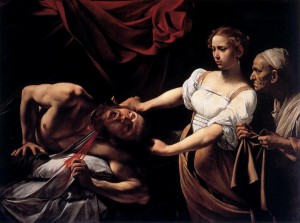

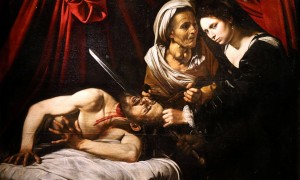
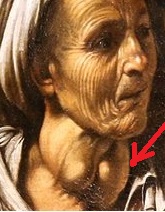
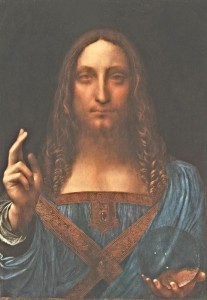

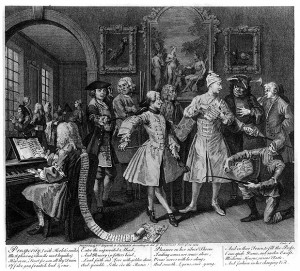
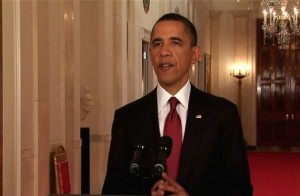



 Songs on the Death of Children
Songs on the Death of Children

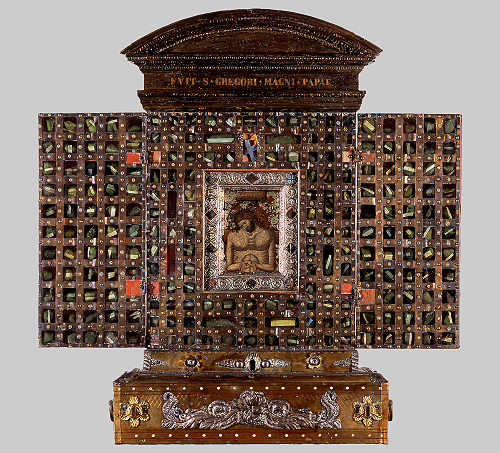

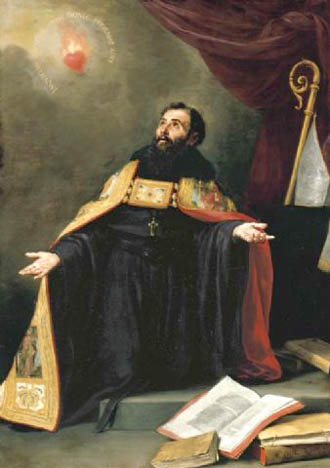



 Nostalgia and Cuban Colonial Interiors
Nostalgia and Cuban Colonial Interiors